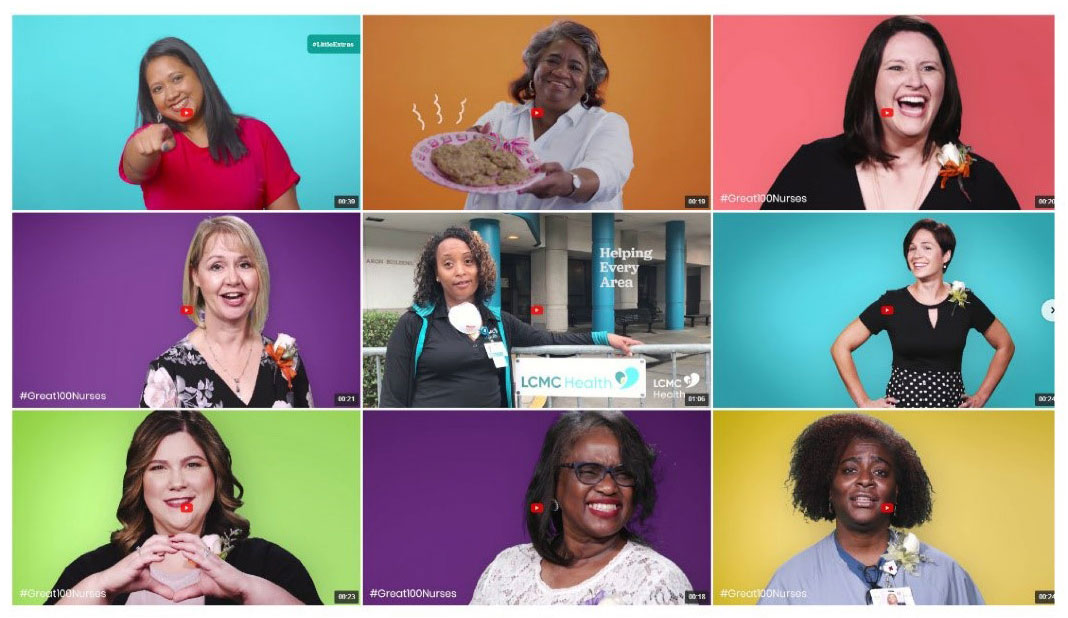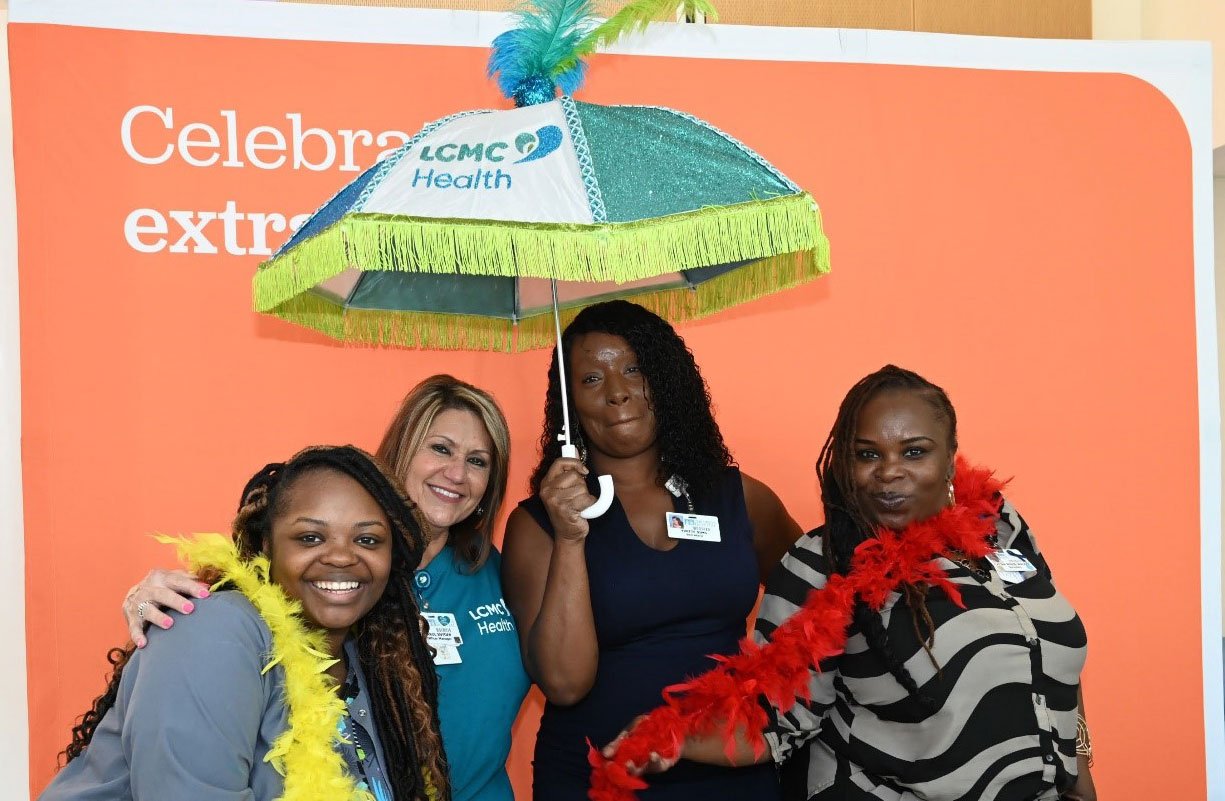DATA
Using Patient Data to Engage the C-Suite in a Brand Experience
LCMC Health made a business case for change by building the connection between their experience attributes and HCAHPS scores
Making the business case for a brand can be a tall task, particularly when competing with other organization priorities such as electronic health record upgrades and hospital acquisitions. Yet, marketing leaders at LCMC Health found a way, connecting brand experience data from consumers with patient Hospital Consumer Assessment of Healthcare Providers and Systems (HCAHPS) scores to speak the C-suite’s language.
A few years ago, leadership at LCMC Health was looking to the future and its path to growth. The brand and the experience were fragmented—a result of five different hospitals, each with unique histories and cultures, coming together as a system to better serve a diverse group of geographies and communities.
“We were building a new health care system and it was an exciting time, but we had not dedicated a lot of energy to our brand strategy,” said Christine Albert, chief marketing and experience officer. “We needed investment so that we could be clear in the community about who we are, what we stand for, and our value proposition to create that clear consumer understanding.”
She and colleagues engaged some outside help, collected a new type of consumer data to combine with HCAHPS that tie to reimbursement, and used the connections to align executives toward a common effort. System CEO, Greg Feirn, is one of the effort’s biggest supporters.
“It’s always easy to push back on the quote, ‘nonrevenue producing department’ [when referring to marketing and experience]. But I think the important piece here is the ability of a brand to drive culture, and culture to drive strategy and overall performance,” he said. “When you think about revenue-producing, while it might be indirect, it just plays a huge, huge role.”
Digging into the Data
To get to that point, LCMC Health connected with Denver-based Monigle, the country’s leading brand experience agency, to analyze their years of brand experience data collected in the Humanizing Brand Experience database, which includes more than 100,000 consumer responses and evaluations of 200+ health care brands. Monigle aligned the brand experience data with publicly available HCAHPS data from hospitals across the country to correlate experience attributes to HCAHPS performance. The team then dug deep into what was happening in New Orleans to understand where LCMC Health could make the biggest impact.
Upon crunching those numbers, the team found a strong correlation between HCAHPS performance and key experience features like having the “best people,” for instance. Deploying this people-first focus was also a main driver of future brand choice and brand advocacy, as were innovation and quality outcomes, noted Justin Wartell, managing principal with Monigle.
“There are so many facets to experience and so many potential connection points into HCAHPS scores. As a leader, the challenge is to determine which ones you want to focus on,” he said. “This is not about fixing or addressing or prioritizing everything. This is about understanding the elements that are the best fit for you.”
This analysis led Albert to key in on people as a core aspect of the new brand and much of the team’s work in building the experience was about amplifying the incredible and unique contributions that its people make across all of its diverse facilities. Albert was then able to approach her CEO and C-suite team armed with this information during their discussions of brand investment.
“If we come to the table knowing confidently that our work around brand experience is also going to be driving our HCAHPS performance, we’re in a stronger position to build the continued case for investment and to continue to make change happen,” Wartell added.
Putting it Into Action With a strong foundation in data, Albert and the marketing and communications team brought the new brand and culture to life. The brand strategy, brand platform and HCAHPS research findings were distilled into tangible tactics that were energizing, differentiating and, most importantly, effective.
With a strong foundation in data, Albert and the marketing and communications team brought the new brand and culture to life. The brand strategy, brand platform and HCAHPS research findings were distilled into tangible tactics that were energizing, differentiating and, most importantly, effective.
The investment in brand is paying off. Since brand launch, LCMC Health has seen double digit gains in brand metrics, steady growth in market share and sustained growth in internal engagement scores.
The 2019 brand launch campaign shone a light on the organization’s extraordinary people and their personalities, with a punch of color inspired by the system’s hometown of New Orleans. It wasn’t a typical “people” health care campaign. LCMC Health avoided traditional, stale images of health care providers in white coats or a sterile hallway appearing “clinical and serious”.
“We know from brand research that a human and emotional connection drives consumer health care preference. Having the ‘best people’ goes beyond the expected diplomas and degrees, it’s about compassion, connection and seeing people as the unique individuals they are, and our brand campaign delivered that,” Albert said.
 The vibrant and warm brand gave LCMC Health permission to be creative in how it presented itself to its communities. An example of that is one of the organization’s traditions, “second lining”. A second line in New Orleans is when revelers follow the “first line” of musicians in a parade, carrying elaborately decorated umbrellas. Brand launch day featured live music from brass bands and a spontaneous gift from a frontline staff member to the CEO, a handmade umbrella with the new logo. When the system recently acquired a hospital, the organization kept the second line tradition going and presented the hospital’s CEO with a branded second line umbrella to officially welcome them to the family.
The vibrant and warm brand gave LCMC Health permission to be creative in how it presented itself to its communities. An example of that is one of the organization’s traditions, “second lining”. A second line in New Orleans is when revelers follow the “first line” of musicians in a parade, carrying elaborately decorated umbrellas. Brand launch day featured live music from brass bands and a spontaneous gift from a frontline staff member to the CEO, a handmade umbrella with the new logo. When the system recently acquired a hospital, the organization kept the second line tradition going and presented the hospital’s CEO with a branded second line umbrella to officially welcome them to the family.
A second example of putting brand into action is how the system recognizes accolades, badges and certifications, and the corresponding acronyms, of which the health care industry has many. For instance, with recent recognition from Healthgrades, rather than just creating a banner or web ad labeled, “Patient Safety Award 2020,” instead, they’ve infused the occurrence with meaning to say, “Patient safety is just one of our specialties.”
“It feels warmer, friendlier and conversational, invites you in and makes the scary world of health care, and all of these other acronyms that folks don’t understand, a little more accessible,” Albert said.
“Our brand and how we bring it to life is all about elevating and celebrating our people and making every one of our 10,000 employees feel that they are something bigger,” Feirn said. “It’s not just a logo and recognizable colors ... it is how we present ourselves to the community. It’s talking in a way that’s understandable for everyone. That builds confidence and if you build confidence in your employee base, you’ll build confidence in your community.”
“Your brand has real power,” he added later. “And to the extent that you can use it to create a sense of belonging among your employees, that turns into having pride in work and that type of pride grows culture, which converts right to patient experience and things like HCAHPS scores.”
This article features interviews with:
Christine Albert
Chief Marketing and Experience Officer
LCMC Health
New Orleans, Louisiana
Greg Feirn
Chief Executive Officer
LCMC Health
New Orleans, Louisiana
Justin Wartell
Managing Principal
Monigle
Denver, Colorado
Image credit: istockphoto.com/Hiraman